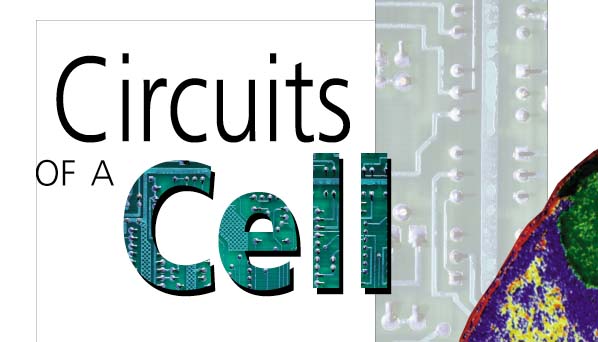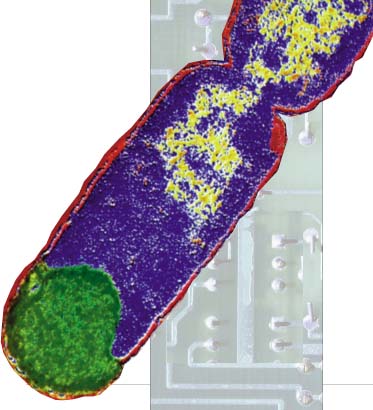 |
BY
PAUL PREUSS

A modern microchip is a wonder, a tiny crystalline object packed with
an integrated array of resistors, capacitors, inductors, amplifiers,
and more-a network that can perform prodigies of signal processing
and computation, as long as a manageable number of electrons flows
through the system. Yet the circuitry of a single-celled organism-even
tinier, common as dirt-is more wonderful still. Microbes adapt to
changing environments, respond with versatility to threat from within
and without, and replicate themselves in profusion. Simple viruses
perform tricks almost as impressive; cells in complex organisms can
do even more. |
 |
|

